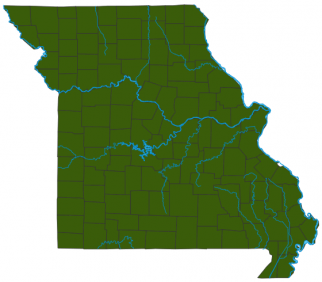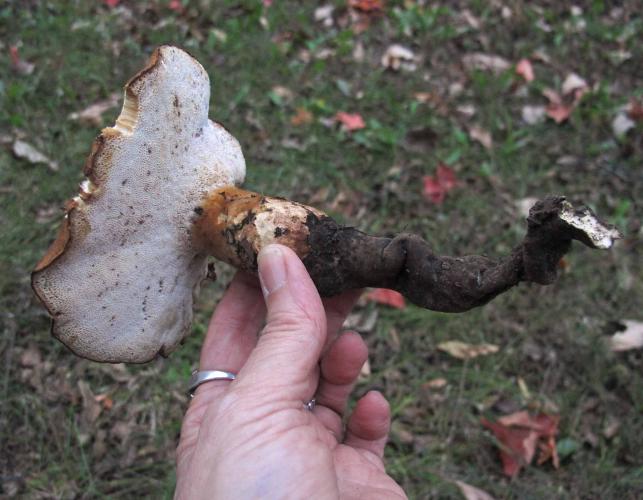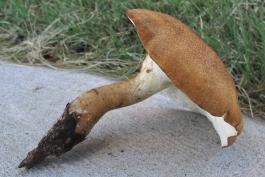
Scruffy, tough, yellowish-brown cap with whitish-yellow pores; stalk with a long, black, rootlike filament. Usually single, on the ground near stumps or attached to buried roots. August–October. Cap convex to sunken; yellowish brown; texture tough, dry, scruffy. Pores tiny; angular; whitish to yellowish. Stalk with equal sides, or enlarged toward the base; dingy yellow; texture scruffy to scaly; stalk central, with a long, black, rootlike, underground filament. Spore print color white. Spores magnified are elliptical, smooth, colorless.
Lookalikes: Black-footed polypore (Polyporus badius) is thin and leathery, and its stalk does not have a rootlike filament.
Cap width: 1½–10 inches; stalk length: 2½–6 inches; stalk width: ¼–1 inch.

Statewide.
Habitat and Conservation
Usually grows singly, on the ground near stumps or attached to buried roots. This is the only fall Missouri polypore with a stalk that has a long, black, rootlike underground filament. The "root" of this polypore can break off if you pull this mushroom from the ground. When collecting mushrooms for identification, use a knife to carefully dig around the base to find any underground structure that will help identify it.
Status
Not edible.
Life Cycle
This species exists most of the time as a network of fungal cells (mycelium) within dead and rotting roots of trees. When ready to reproduce, the mycelium develops a mushroom, which is an aboveground reproductive structure. Spores are produced in the pores beneath the cap and are released to begin new mycelia elsewhere. The mycelium of a mushroom can live for decades.
Human Connections
Many inedible fungi have important roles in nature, benefiting humans indirectly by keeping forests productive and healthy. They each also possess a strange beauty in color and form that humans enjoy.
Ecosystem Connections
Although it seems to grow from the soil, this is one of the many fungus species that live on decaying wood. It and other such saprobic fungi play an incredibly important role in breaking down the tough materials wood is made of and returning those nutrients to the soil.




Mushrooms are a lot like plants, but they lack chlorophyll and have to take nutrients from other materials. Mushrooms are neither plants nor animals. They are in a different kingdom — the fungi. Fungi include the familiar mushroom-forming species, plus the yeasts, molds, smuts, and rusts.
Always be cautious when eating edible mushrooms. Be absolutely sure of the ID, and only eat a small amount the first time you try it to avoid a reaction..





















